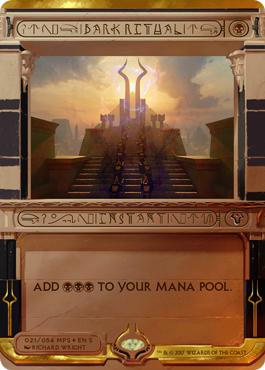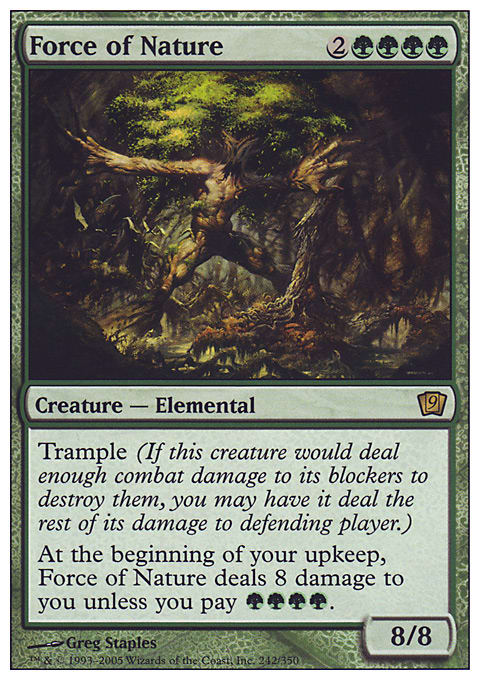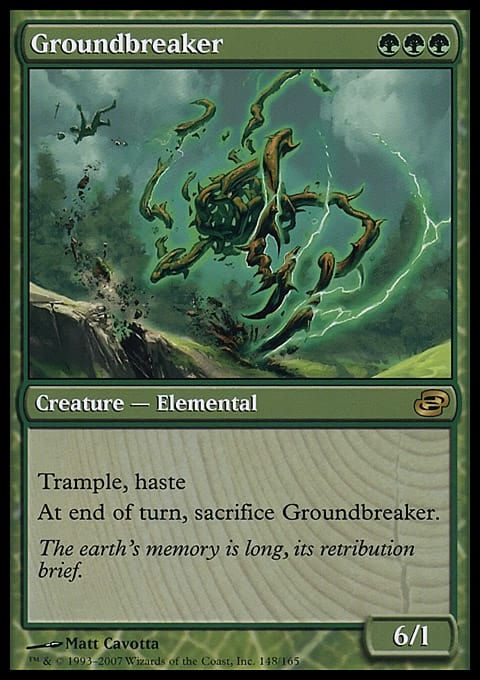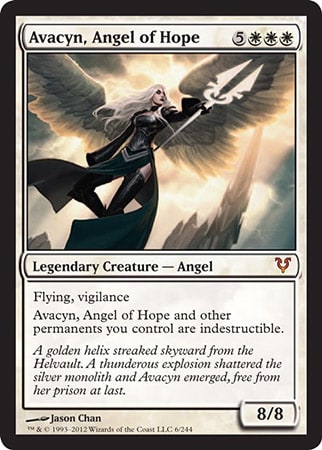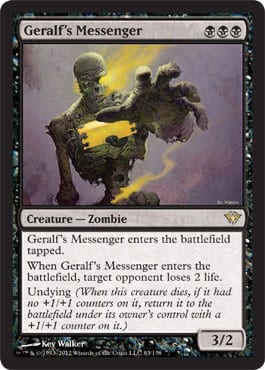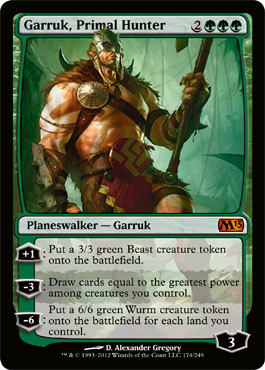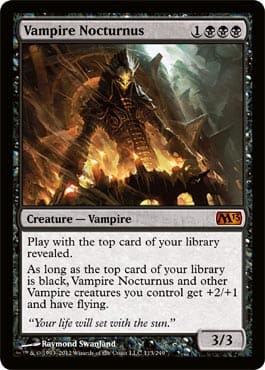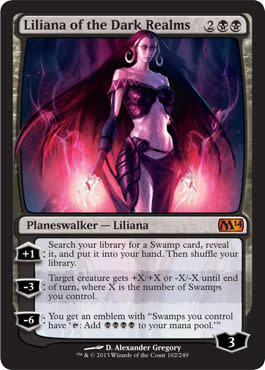But for all the accolades, black’s been typecast since then. You might not have noticed, but the best black spells are far blacker than any other color gets its spells. Black’s recent flagship spells continue to cost a silly amount of black mana, which would be fine except that there’s no Dark Ritual. As a result, black’s been put in a strange spot where it has great difficulty playing with other colors. My take on it is that Dark Ritual has fueled too much nostalgia of ![]()
![]()
![]() mana costs, and modern design lazily is repeating that nostalgia to players’ detriment.
mana costs, and modern design lazily is repeating that nostalgia to players’ detriment.
I realize this is a leftfield complaint initially, but hear me out, and you might agree with me.
Some Statistics You’d Have No Cause to Know
Color screw and mana screw went together in Limited Edition Alpha. The original design was a lot more about color wars than what most of us are used to. For color hate, there are Wards, Circles of Protection, Blue and Red Elemental Blasts, Deathgrip and Lifeforce, Gloom, and Karma. For land hate, try Armageddon, Evil Presence, Sinkhole or Stone Rain or Ice Storm or Kudzu, and Conversion or Karma or Volcanic Eruption or Flashfires or Tsunami, with Dingus Egg to rub it in your face. Combined, that’s almost ten percent of the set.
On the other side of the equation, many iconic cards had color-intensive mana costs. White had Personal Incarnation at ![]()
![]()
![]()
![]() (and Farmstead at
(and Farmstead at ![]()
![]()
![]() —no idea why). Blue had Volcanic Eruption. Red didn’t get any triple-costed cards until Arabian Nights, where it would receive Mijae Djinn and its counterpart Ydwen Efreet. Green got Gaea's Liege and the
—no idea why). Blue had Volcanic Eruption. Red didn’t get any triple-costed cards until Arabian Nights, where it would receive Mijae Djinn and its counterpart Ydwen Efreet. Green got Gaea's Liege and the ![]()
![]()
![]()
![]()
![]() Force of Nature, which required you to pay two good games during upkeep, or just four Gs. ($4,000 seems like a lot . . . )
Force of Nature, which required you to pay two good games during upkeep, or just four Gs. ($4,000 seems like a lot . . . )
Black saw four cards with at least triple costs in Alpha: Darkpact, Demonic Hordes, Lich, and Lord of the Pit. If you thought Force of Nature’s needing two good games per upkeep was bad, you had to pay the Better Business Bureau every upkeep for Demonic Hordes; at least I’m assuming that’s why they spelled out the Bs in Alpha. (Demonic Hordes is Better Business Bureau certified for ethical land destruction.)
Four black-heavy spells versus two for white and green doesn’t sound like much of a difference on the surface. But it’s played out through Magic history. Each color’s number of spells with at least a triple-color commitment:
- White – 49
- Blue – 55
- Black – 94
- Red – 59
- Green – 68
Or for a smaller focus, the number of spells that cost exactly 3 of the same colored mana, listing all of those spells designed in the Modern era:


 – 8 (Devout Lightcaster, Opal Guardian)
– 8 (Devout Lightcaster, Opal Guardian)

 – 8 (Sanity Grinding)
– 8 (Sanity Grinding)

 – 24 (Bridge from Below, Garza's Assassin, Geralf's Messenger, Kuon, Ogre Ascendant, Phylactery Lich, Phyrexian Etchings, and Sadistic Sacrament)
– 24 (Bridge from Below, Garza's Assassin, Geralf's Messenger, Kuon, Ogre Ascendant, Phylactery Lich, Phyrexian Etchings, and Sadistic Sacrament)

 – 9 (War Elemental and Flamebreak)
– 9 (War Elemental and Flamebreak)

 – 7 (Groundbreaker, Leatherback Baloth, Predator Ooze, and Unyaro Bees)
– 7 (Groundbreaker, Leatherback Baloth, Predator Ooze, and Unyaro Bees)
Roughly, black gets as many color-intensive early spells as the other colors combined. These days, green’s fatties tend to need a lot of ![]() ; Standard has thirteen triple-green spells, second to black’s fifteen, and ahead of red and white’s eight each and blue’s five. But even against that backdrop, development has pushed black into deeper, swampy waters, as Griselbrand and Phyrexian Obliterator need quadruple black; only Geosurge is asking as much from another color.
; Standard has thirteen triple-green spells, second to black’s fifteen, and ahead of red and white’s eight each and blue’s five. But even against that backdrop, development has pushed black into deeper, swampy waters, as Griselbrand and Phyrexian Obliterator need quadruple black; only Geosurge is asking as much from another color.
So Why Is Black Special?
From my vantage point, there are a few reasons black is more saturated than other colors. One is that the contrast between light and dark and/or good and evil is one of the easiest to display, and it’s therefore relatively simple to place a card in a pure good or pure evil setting—see, for example, True Conviction, Victory's Herald, Angel of Jubilation, and Avacyn, Angel of Hope. Angel of Jubilation’s particularly instructive for its pumping nonblack creatures.
Basically, what white cards are mega-white are the holy counterparts to mega-black—Griselbrand has Avacyn, while Phage the Untouchable has Akroma, Angel of Wrath. Devout Lightcaster is ![]()
![]()
![]() because many evil things are
because many evil things are ![]()
![]()
![]() . Those relationships are more obviously antagonistic than, for example, the nature-versus-nurture fight that pits green against blue.
. Those relationships are more obviously antagonistic than, for example, the nature-versus-nurture fight that pits green against blue.
But if ease-of-flavor portrayal is development’s problem, neither development nor creative is working properly. Yes, ![]()
![]()
![]()
![]()
![]() shows that Griselbrand is a paragon of what black stands for. But is Dungrove Elder, who’s only alive from Forests, somehow less green at
shows that Griselbrand is a paragon of what black stands for. But is Dungrove Elder, who’s only alive from Forests, somehow less green at ![]()
![]() than Predator Ooze at
than Predator Ooze at ![]()
![]()
![]() ?
?
After enough of these irregularities, it’s tough to argue anything’s consistent as developers push cards for tournament playability by making them easier to cast. Yet somehow, this push eludes black. Phyrexian Obliterator never met its hype, but I’ve never relished facing it either, and Geralf's Messenger has done quite well for itself. Other colors don’t see creatures with power levels pushed by a heavy color commitment.
Is that a blessing or a curse for black? I’d call it a curse, largely because mono-colored or nearly mono-colored decks rarely have enough angles of attack to make up for their consistency. The Scars of Mirrodin block has given everyone enough artifacts and Phyrexian mana to compensate somewhat, but when those aren’t there, black’s best cards are unplayable outside a mono-black deck.
Black’s already disadvantaged in modern Magic. It can’t get rid of artifacts, enchantments, or planeswalkers efficiently unless they’re in the opponent’s hand, and it currently isn’t great at getting rid of lands. Are those great tradeoffs for getting to play a few awesome spells on time? So far: No.
All of this would make more sense if black could ramp. Green’s spells such as Primalcrux, Genesis Wave, Garruk, Primal Hunter, and Vorapede work because its primary mana accelerators also make green mana. But black generally doesn’t ramp anymore. Dark Ritual influenced a lot of cool cards that now provide nostalgia but are difficult to cast without Dark Ritual. The legs were pulled out from under black’s table without buying a new table.
None of this is to say Dark Ritual should be reprinted—far from it. Dark Ritual has enabled too much degeneracy over the years. But a long-gone card created so much of black’s identity—and just as importantly created a demographic that loves those cards—that in a lot of recent sets, black’s best cards have underperformed at the highest levels due to tough mana costs. There’s no inherent reason that black spells should be more difficult to cast than other colors’ spells; a better balance would enable more effective splashes to shore up deficiencies—that is: what the other colors do more easily.
Is M13 Helping?
Thankfully, Magic 2013 could start a trend away from hard-to-play all-stars in black. It might be moot for a while given the gold-heavy Return to Ravnica, but there are some subtle differences in Magic 2013 black that could be the hint of a sea change. (Not to be confused with the hint of a Sea's Claim.)
The only triple-black costs in Magic 2013 are on reprints Phylactery Lich (a good example of the Dark Ritual nostalgia issue) and Vampire Nocturnus. Thankfully, the cards encouraging you to play black this set are more like Nocturnus than Lich. For starters, Nocturnus is good at almost every stage of the game, putting it more in line with Massacre Wurm than Geralf's Messenger. For enders, Vampire Nocturnus encourages black cards more than black mana.
The Swamps-matter theme of Magic 2013 continues in this vein (joining Vein Drinker, perhaps). Yes, you’ll still be playing mostly black, but the ability to splash another color is vital. U/B Zombies in Standard hasn’t always played blue Zombies; it’s just used blue for Phantasmal Image, Mana Leak, and similar support. Similarly, B/R Zombies isn’t running red Zombies because there aren’t any; the color is just to give support to all the awesome black cards.
Liliana of the Dark Realms seems evil enough to cost
Similarly, the reprinted Mutilate is devastating when it’s counting all your lands, but it will still be an effective board wipe in a deck in which most of your lands are Swamps. Nefarox, Overlord of Grixis couldn’t cost ![]()
![]()
![]()
![]() and have that name fit on the card, but he seems like a prime candidate to have been
and have that name fit on the card, but he seems like a prime candidate to have been ![]()
![]()
![]()
![]() just to make him seem cooler and/or more evil. (And also a ghost.)
just to make him seem cooler and/or more evil. (And also a ghost.)
On the flipside, there are several interesting triple-costers in Magic 2013 for other colors. Omniscience is as blue an effect and flavor as it comes, while Worldfire’s the same for red. Elderscale Wurm is a mixture of red and white abilities, so it doesn’t feel entirely green, but the execution feels green enough to be all right with ![]()
![]()
![]() . Black (lots of evil!), white (lots of anti-evil!), and green (lots of nature!) have been comparatively easy to design for, but very blue and very red spells are tougher to come by, so Omniscience and Worldfire are conceptually encouraging.
. Black (lots of evil!), white (lots of anti-evil!), and green (lots of nature!) have been comparatively easy to design for, but very blue and very red spells are tougher to come by, so Omniscience and Worldfire are conceptually encouraging.
Conclusion
I understand the love for Dark Ritual and evil-feeling cards. It’s a major part of Magic history. But if the card’s only legacy in 2012 is to create cool cards that are difficult to play relative to other colors, that legacy actively is hurting black. Nostalgia’s great, but not at the expense of playability.
Black’s color commitments should be about the same as other colors’ commitments. Magic isn’t conceptualized as a game of good versus evil; the color pie catalyzes several philosophies that are fundamental to game functions. Designers and developers recognize this for four colors. It’s time to forget about Dark Ritual and include black in modern costing.













